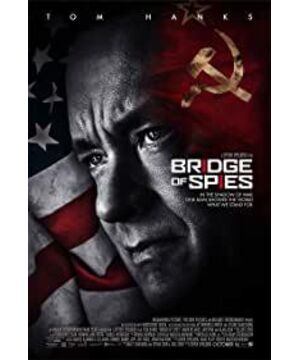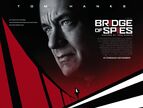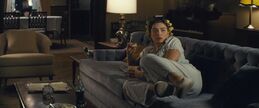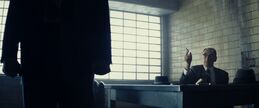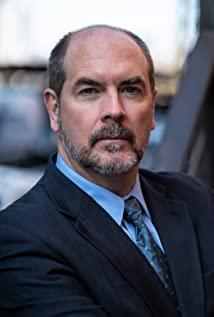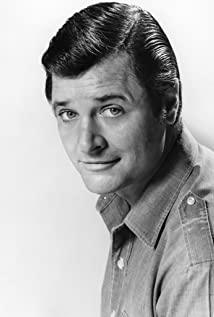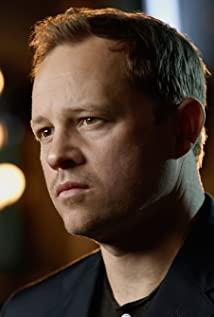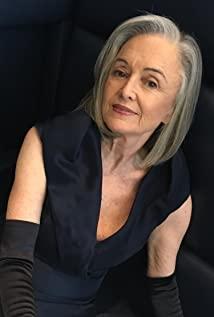On the 88th Oscar-winning list, "Bridge of Spy" won only one place, best supporting actor: Mark Rylance. In the group photo after the awards ceremony, Leonardo was in the limelight, surrounded by best actress Brie Larson and best supporting actress Alicia Vikander, and captured the global entertainment headlines. , The old man Mark Lillance stood beside the three with a smile, like a neglected corner, but he comfortably enjoyed the moment of holding the figurine.
As another historical film by Spielberg, this time it was not as eye-catching and enthusiastic as "Saving Private Ryan", "Schindler's List", "Lincoln" and other films, even in various 2015 years. It is almost impossible to see "Bridge of Spies" in the inventory. As a senior movie fan said, the film is too uneventful and lacks surprises. Spielberg is becoming more and more like a master craftsman rather than an artist. This time the director did not create a thrilling and heart-wrenching plot. Instead, he chose the Cold War background to show the lawyer James Donovan’s human rights morality and the spirit of the U.S. Constitution in the form of a biopic. Tom Hanks also used him Prudent acting skills have fulfilled the mission of shaping the image of justice in the main theme film. It is true that the film is steady and sophisticated from all angles, with photography, soundtrack, and smooth editing and neat confrontation that link the plot. But what cannot be ignored is that the surprise and sharpness of the role of Mark Lillance as the spy Abel is no less than the two-time Oscar actor Tom Hanks. Although there are not many scenes, every appearance and dialogue are particularly sonorous and powerful. . "Bridge of Spies" is based on a true story. It tells the story of the insurance lawyer James Donovan's defense of the Soviet spy Rudolf Abel during the Cold War, and ultimately facilitated the historical event of the exchange of US and Soviet spies on the Greennik Bridge in Germany. . The tone has been set, and the plot focuses on the development of the event and the restoration of historical figures at that time. At the beginning of the film, Abel makes a self-portrait in the mirror. Abel in reality, him in the mirror, and him in the painting form an interesting structure that indicates the complexity of the characters. The film also focuses on shaping Abel's character from the three stages of intelligence work, after being arrested, and exchanging spies.
As a member of the hidden front, the identity of the painter is a good cover. At the beginning, Abel's anti-reconnaissance skills were revealed. In the subway station, he pretended to be sketching from life already had insight into the behavior of the stalkers. After obtaining important nuclear energy information, he opened the coin and checked the password with a magnifying glass. A series of actions were familiar, slow and orderly, as if he was a well-trained veteran driver with many years of experience in intelligence work. But in the next shot, a team of FBI agents suddenly broke into the apartment. Abel came out of the bathroom and saw this scene was obviously taken aback, and then he immediately recovered calm within a second. Dentures on the sink. It is conceivable that at this critical juncture, Abel took advantage of the interruption and his brain was running fast, thinking about how to destroy the information he had just obtained in full view. Just like Abel in the mirror, the mirror reflects the necessary disguise and professionalism required for his career. At this time, he plays the image of a bad old painter in front of the FBI, with disheveled clothes, thin body, Mediterranean hairstyle, and a mouthful. Dentures, panic and innocent eyes. When asked about suspected involvement in espionage that would be arrested, he still remained ignorant of outsiders. This scenario is like a pack of hungry wolves rounding up a hare. But don’t forget that Cunning Rabbit is an old driver. He used the opportunity to wipe the color palette, pretending to inadvertently twist the password paper and hide it in the cloth to wipe the paint, calmly and quickly dealt with the important evidence, and the FBI are still working on it. There can be no rewarding search. This historical figure played by Mark Rylance should not be underestimated. His original name was William August Fisher, Colonel KGB, and he was known as the "Contemporary Spy King". Western intelligence agencies called him the "Man of Thousand Faces". ". Abel is proficient in English, Russian, German, Polish and other languages and has a deep knowledge of spy. He is good at disguising and has outstanding talents. He joined the Soviet Red Army at the age of 22 and received professional training. From the initial research on radio intelligence, he was later sent to the United Kingdom, France, Norway, Turkey, Germany and other places to perform intelligence tasks. He once entered the Gestapo and made great contributions in World War II. Such a high-ranking spy with great military exploits and battle-tested battlefield was naturally not afraid of the FBI's arrest, so there was the beginning scene.
In prison, Abel, who had removed his disguise, was a firm communist, abiding by his principles and having a firm heart. This is also his true self. Talking to Donovan in prison for the first time, Donovan tried to persuade Abel to cooperate with the U.S. government, but before he could finish speaking, Abel bluntly said NO, his eyes were firm but his expression was full of disdain and he turned his head down again. Turn to Donovan. When Donovan was surprised that he was not panicked at all, he just shrugged his shoulders lightly and said: Would it help? Before the opening of the initial trial, Donovan knew that the situation was not optimistic. Abel's superiors did not recognize him as a Soviet citizen, and Abel was still teasing his superiors, and it was not always right. He asked Abel if he was worried? Abel only asked him: Would it help? The last time he was exchanging spies, Abel said that maybe my people would shoot me, Donovan asked again, are you worried? He only said lightly: Would it help?
In prison, Abel focused more on art. He told Donovan that he was not afraid of death, although this was not the first choice. Obviously, he cares more about whether there is spiritual and artistic support in his life than he was convicted of prison life. The first time he met with Nodovan, he asked for drawing tools. Before every hearing, Donovan was very anxious, but he was painting a portrait of the judge, including in the end he also gave it to Donovan. A portrait serves as a commemoration of this experience of sympathy and sympathy. At the second meeting, he told that his wife was a harpist. For the third time in prison, Donovan even brought him a radio through various inspections. Abel missed the music too much, and he was enjoying Shostakovich's symphony. The film tries to use some details to intersperse the main line to restore the real Colonel Abel. At the beginning, the self in his painting also shows another aspect of Abel. The real Colonel Abel has a lot of accomplishments in photography and painting. Just follow the parents to learn piano. In the age of war, he shouldered the mission of the country and used multiple roles to obtain important information about the trend of history, but he always kept his own corner in his heart. Art is his pure inner world, and it is also a peaceful moment to get rid of the smoke of war.
View more about Bridge of Spies reviews


